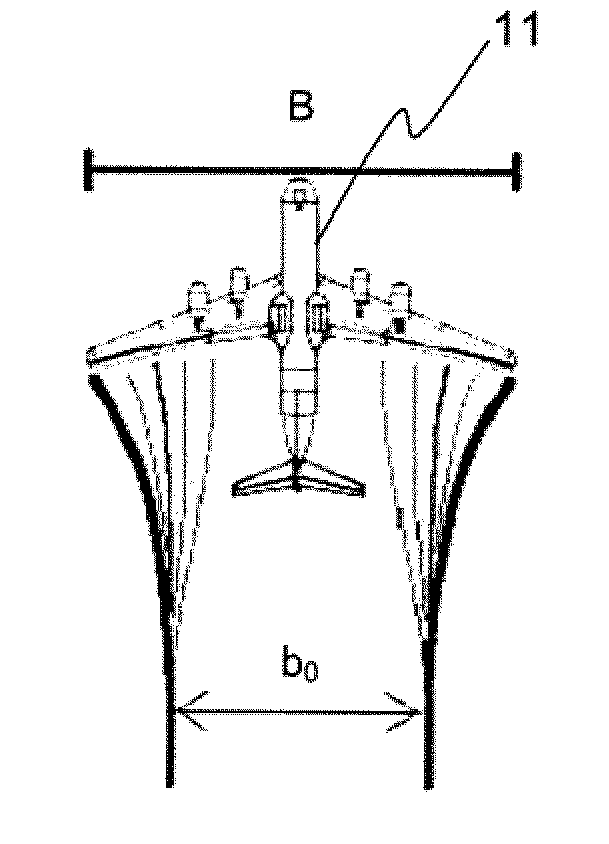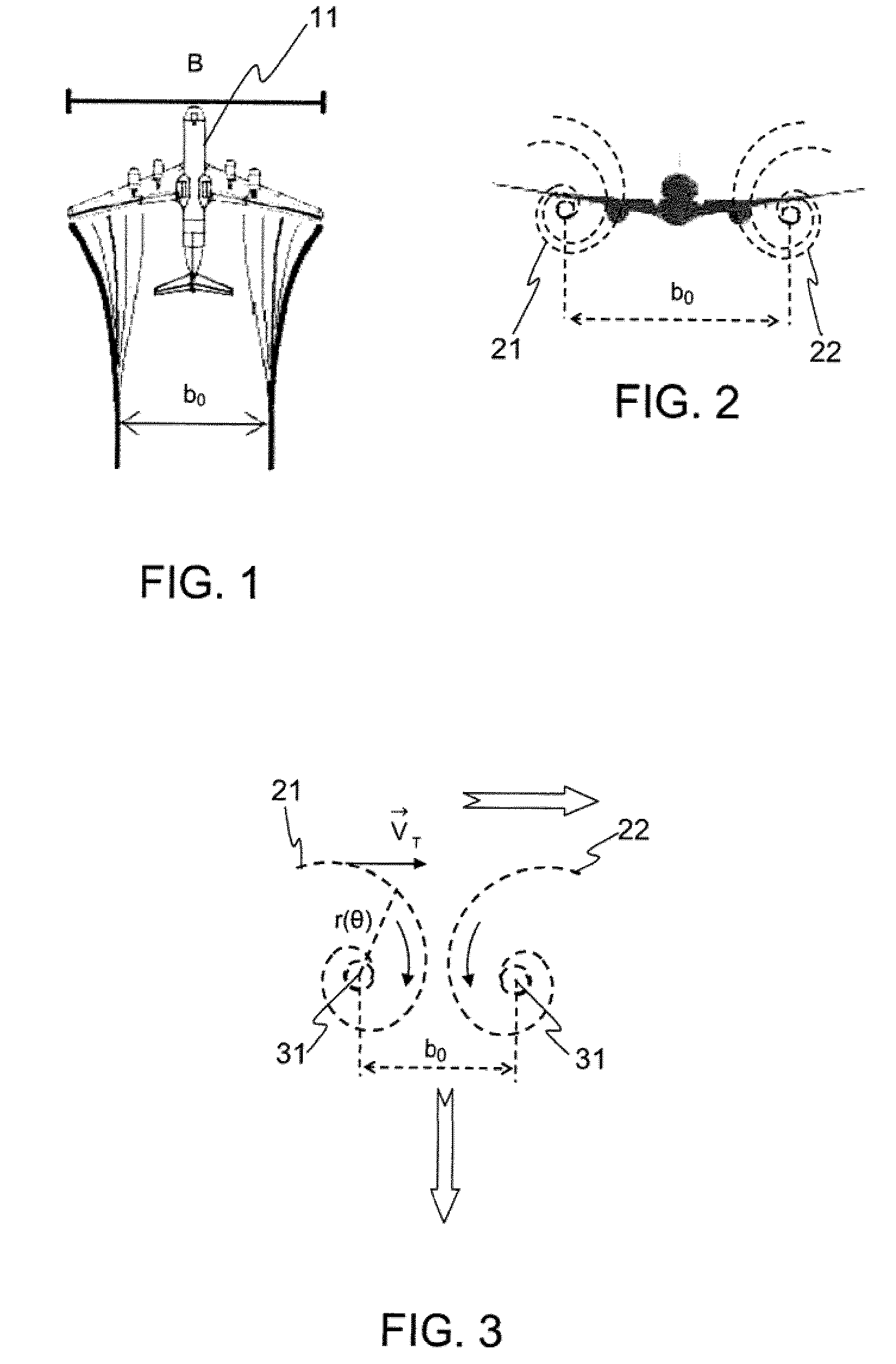Method for radar monitoring of wake turbulence
a radar and wake turbulence technology, applied in the direction of instruments, measurement devices, climate sustainability, etc., can solve the problems of not being able to determine whether the turbulence is particularly dangerous, not being able to operate correctly in clear weather,
- Summary
- Abstract
- Description
- Claims
- Application Information
AI Technical Summary
Benefits of technology
Problems solved by technology
Method used
Image
Examples
Embodiment Construction
[0036]FIGS. 1 to 4, which illustrate in a schematic manner the wake turbulence phenomenon created by an aircraft 11, are considered initially. As illustrated by these three figures, the wake turbulence is materialized by the creation to the rear of the aircraft of two swirls 21 and 22 (vortices) which cause oppositely directed rotations of the air mass. One thus speaks of “counter-rotating” eddies.
[0037]Each eddy 21, 22 takes the form of a spiral whose points are situated with respect to the center at a distance r(θ) varying exponentially as a function of the number of revolutions performed in order to join the point under consideration to the center. It is thus possible to write the relation:
r(θ)=a·ebθ for θ varying from 0 to Nπ (N integer). [1]
[0038]where a and b represent the geometric parameters of the spiral.
[0039]Each eddy is furthermore characterized by its nucleus 31 of radius rc.
[0040]It is known to evaluate the danger related to the wake turbulence caused by an aircraft,...
PUM
 Login to View More
Login to View More Abstract
Description
Claims
Application Information
 Login to View More
Login to View More - R&D
- Intellectual Property
- Life Sciences
- Materials
- Tech Scout
- Unparalleled Data Quality
- Higher Quality Content
- 60% Fewer Hallucinations
Browse by: Latest US Patents, China's latest patents, Technical Efficacy Thesaurus, Application Domain, Technology Topic, Popular Technical Reports.
© 2025 PatSnap. All rights reserved.Legal|Privacy policy|Modern Slavery Act Transparency Statement|Sitemap|About US| Contact US: help@patsnap.com



